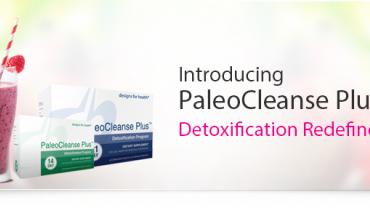
"
The human body is constantly exposed to a wide array of toxins from our surroundings and from those produced within the body. Also known as xenobiotics toxins created externally can vary from food-borne pollutants like pesticides herbicides and fertilizers to environmental toxins such as secondhand cigarette smoke car exhaust and prescription medications. Even in the absence of harmful toxins from external sources the human body is tasked with enormous biochemical and physiological challenges from the constant creation of internal metabolic waste products.
Unfortunately the combined burden that our environment diet lifestyle and metabolic processes place upon our bodies each day can overwhelm the detoxification capacity of many individuals leading to a wide range of dysfunctions. While the human body has developed complex enzymatic mechanisms to detoxify these substances there are however individual genotypic variations in detoxifying capacity that lead to decreased detoxification efficiency and efficacy and subsequently increased risk of developing certain diseases.
Toxic risks
Even in individuals with normal or even optimally performing detoxification pathways exposure to exogenous toxins such as heavy metals pesticides industrial compounds and pollutants is associated with increased risk for several types of cancers Parkinson's disease fibromyalgia multiple chemical sensitivities and chronic fatigue syndrome.
Most of the toxins that enter our bodies are lipid-soluble compounds. In order for these toxins to be safely and efficiently removed from the body they need to be transformed into water-soluble compounds and eliminated via urine. This critical function occurs in the liver through a two-step enzymatic process involving the phase I and II detoxification pathways. When either or both of these pathways are not functioning optimally fat-soluble toxins pass through the liver unmetabolized and are deposited in various tissues. Over time accumulation of these highly damaging toxins can result in numerous symptoms and as mentioned above can increase the risk of developing severe diseases.
Two-step process
The first phase of the detoxification process simply called phase I is the primary responsibility of the cytochrome P450 family of enzymes. During Phase I cytochrome P450 enzymes initiate reactions which help polarize the lipid-soluble molecule the first step in making a lipid soluble compound a fully water-soluble one. The reactions involved are primarily oxidation reduction hydrolysis hydration and dehalogenation.
Nutritionally the entire vitamin B family is required as co-factors in order to facilitate these reactions. Also sulfurous compounds found in the cruciferous family of vegetables like glucosinolates can help up-regulate specific enzymes in the P450 family which greatly aid in the detoxification and metabolism of hormones in particular estrogen.
Ideally the metabolites from phase I reactions would then be properly shuttled to the phase II pathways transformed into fully water-soluble compounds and then excreted. Again however any imbalance between the two pathways can result in a build-up of phase I metabolites. Research indicates that there is tremendous amounts of variability of phase I functioning even among healthy individuals.
Support through nutrition
A sluggish phase II can stall the detoxification process by inhibiting the completion of the phase I intermediate metabolism. These phase I intermediates can actually be more toxic and damaging than the original toxin/molecule. Part of insuring the best possible execution of the phase II portion of the detoxification process is to supplement those constituents that are involved in reactions during phase II. Important nutrients that support and feed these reactions include the methylators such as SAMe folate and choline amino acids such as glutamine glycine and taurine for amino acid conjugation and sulfurous compounds like MSM N- acetyl cysteine and taurine for sulfation reactions.
Additionally several phase II reactions including methylation sulfonation glucuronidation and glutathione conjugation require the energy molecule ATP at some time during the reactions process. These ATP-mediated reactions are magnesium dependent.
The perils of fasting
Finally fasting for some people has become a popular form of detoxification. But because of the nutritional demands that are inherent in the metabolic processes that make up detoxification physiology for many fasting which would be lacking in supplying many of the important fundamental and crucial co-factors and nutrients necessary for appropriate detoxification may not be an ideal method of detoxification. Also those with hypoglycemia would find fasting as an alternative to a formal nutrient and co-factor-driven detoxification challenging to say the least.
In conclusion it may be that the optimization of both phase I and phase II detoxifications pathways is key to a successful and less stressful detoxification process thus helping to reduce or eliminate the chances of unfortunate side effects which can only be achieved by ensuring proper nutritional support.